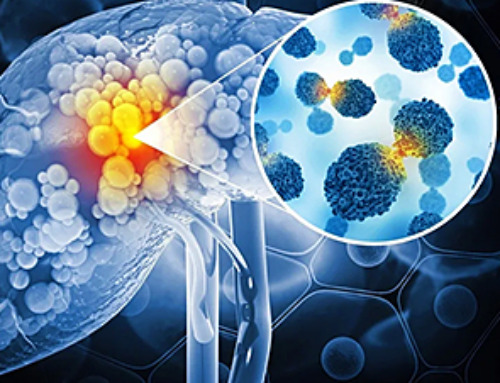Since the coronavirus pandemic shut down the world, scientists have clamored to develop vaccines to prevent the spread and medicines that will cure the sick. But a virus’ main goal is to replicate and infect, so the virus can mutate to survive and continue on its journey. Looking at the coronavirus, you’ll see it has several mutations, including the most recently talked about delta variant sweeping over India and invading the rest of the globe.
This delta variant is about 4 times more transmissible and also more severe than the original Wuhan strain or the A-lineage. And Pfizer (NYSE: PFE), Moderna (NASDAQ: MRNA) and Johnson & Johnson (NYSE: JNJ) have come out to proclaim their respective vaccines’ effectiveness against this and other variants that cause COVID-19. In fact, real world scenarios in India show the effectiveness of the vaccines around 65% effective as opposed to the presumed 95%. That’s a significant decrease. But no matter the percentage rate effectiveness of the vaccines, the only way to win the battles to come is to develop effective therapeutics to complement the them.
Variants Now and to Come
The first strain of the coronavirus coming out of Wuhan is known as the A-lineage. Since the beginning, this highly variable RNA virus mutated to enhance its effectiveness at infecting the population, thereby creating the B-lineage, which includes everything from D614G to the current delta version.
Now, in Peru, medical professionals identified the start of a new lineage — C. That lineage includes the Lambda variant, which could be more deadly than the previous variants of SARS-CoV-2, although the evidence to support that is insufficient at this time. That said, there is no way to stop the virus from mutating again and again into more deadly strains.
So, NanoViricides (NYSE: NNVC), a global leader in nanomedicine, decided to work on medicines to treat and heal the disease — no matter the mutation. And the drug already showed its oral effectiveness in animal models. It is moving as fast as possible to keep up with the prolific virus to get society to a point where it can live with something that looks like it’s here to stay. In addition to NanoViricides, other drugs are in the works to continue the fight against the coronavirus and its variants. These include Merck’s molnupiravir, which received several billion dollars in government funding and failed Phase 2 of clinical studies, and Pfizer’s oral antiviral protease inhibitor PF-07321332/ritonavir combination soon expected to enter Phase 2 clinical trials.
After the Pandemic’s end
The truth is, people are waiting for the pandemic to end, but SARS-CoV-2 and its variants will more than likely become endemic as it keeps coming back in more mutated versions for the foreseeable future. As UK Prime Minister Boris Johnson points out, the population will have to “learn to live with” it.
Because of the social and economic impact the virus has had, it’s unreasonable to think the entire world will continue to shut down indefinitely. As a global society, that’s not a sustainable existence. The better idea is to use vaccinations to limit the spread while developing therapeutics to treat the COVID-19 disease caused by the virus. That way, people can coexist with the coronavirus and get back to the kind of life society so desperately craves.
News
Vision can be rebooted in adults with amblyopia, study suggests
Temporarily anesthetizing the retina briefly reverts the activity of the visual system to that observed in early development and enables growth of responses to the amblyopic eye, new research shows. In the common vision [...]
Ultrasound-activated Nanoparticles Kill Liver Cancer and Activate Immune System
A new ultrasound-guided nanotherapy wipes out liver tumors while training the immune system to keep them from coming back. The study, published in Nano Today, introduces a biodegradable nanoparticle system that combines sonodynamic therapy and cell [...]
Magnetic nanoparticles that successfully navigate complex blood vessels may be ready for clinical trials
Every year, 12 million people worldwide suffer a stroke; many die or are permanently impaired. Currently, drugs are administered to dissolve the thrombus that blocks the blood vessel. These drugs spread throughout the entire [...]
Reviving Exhausted T Cells Sparks Powerful Cancer Tumor Elimination
Scientists have discovered how tumors secretly drain the energy from T cells—the immune system’s main cancer fighters—and how blocking that process can bring them back to life. The team found that cancer cells use [...]
Very low LDL-cholesterol correlates to fewer heart problems after stroke
Brigham and Women's Hospital's TIMI Study Group reports that in patients with prior ischemic stroke, very low achieved LDL-cholesterol correlated with fewer major adverse cardiovascular events and fewer recurrent strokes, without an apparent increase [...]
“Great Unified Microscope” Reveals Hidden Micro and Nano Worlds Inside Living Cells
University of Tokyo researchers have created a powerful new microscope that captures both forward- and back-scattered light at once, letting scientists see everything from large cell structures to tiny nanoscale particles in a single shot. Researchers [...]
Breakthrough Alzheimer’s Drug Has a Hidden Problem
Researchers in Japan found that although the Alzheimer’s drug lecanemab successfully removes amyloid plaques from the brain, it does not restore the brain’s waste-clearing system within the first few months of treatment. The study suggests that [...]
Concerning New Research Reveals Colon Cancer Is Skyrocketing in Adults Under 50
Colorectal cancer is striking younger adults at alarming rates, driven by lifestyle and genetic factors. Colorectal cancer (CRC) develops when abnormal cells grow uncontrollably in the colon or rectum, forming tumors that can eventually [...]
Scientists Discover a Natural, Non-Addictive Way To Block Pain That Could Replace Opioids
Scientists have discovered that the body can naturally dull pain through its own localized “benzodiazepine-like” peptides. A groundbreaking study led by a University of Leeds scientist has unveiled new insights into how the body manages pain, [...]
GLP-1 Drugs Like Ozempic Work, but New Research Reveals a Major Catch
Three new Cochrane reviews find evidence that GLP-1 drugs lead to clinically meaningful weight loss, though industry-funded studies raise concerns. Three new reviews from Cochrane have found that GLP-1 medications can lead to significant [...]
How a Palm-Sized Laser Could Change Medicine and Manufacturing
Researchers have developed an innovative and versatile system designed for a new generation of short-pulse lasers. Lasers that produce extremely short bursts of light are known for their remarkable precision, making them indispensable tools [...]
New nanoparticles stimulate the immune system to attack ovarian tumors
Cancer immunotherapy, which uses drugs that stimulate the body’s immune cells to attack tumors, is a promising approach to treating many types of cancer. However, it doesn’t work well for some tumors, including ovarian [...]
New Drug Kills Cancer 20,000x More Effectively With No Detectable Side Effects
By restructuring a common chemotherapy drug, scientists increased its potency by 20,000 times. In a significant step forward for cancer therapy, researchers at Northwestern University have redesigned the molecular structure of a well-known chemotherapy drug, greatly [...]
Lipid nanoparticles discovered that can deliver mRNA directly into heart muscle cells
Cardiovascular disease continues to be the leading cause of death worldwide. But advances in heart-failure therapeutics have stalled, largely due to the difficulty of delivering treatments at the cellular level. Now, a UC Berkeley-led [...]
The basic mechanisms of visual attention emerged over 500 million years ago, study suggests
The brain does not need its sophisticated cortex to interpret the visual world. A new study published in PLOS Biology demonstrates that a much older structure, the superior colliculus, contains the necessary circuitry to perform the [...]
AI Is Overheating. This New Technology Could Be the Fix
Engineers have developed a passive evaporative cooling membrane that dramatically improves heat removal for electronics and data centers Engineers at the University of California San Diego have created an innovative cooling system designed to greatly enhance [...]





















